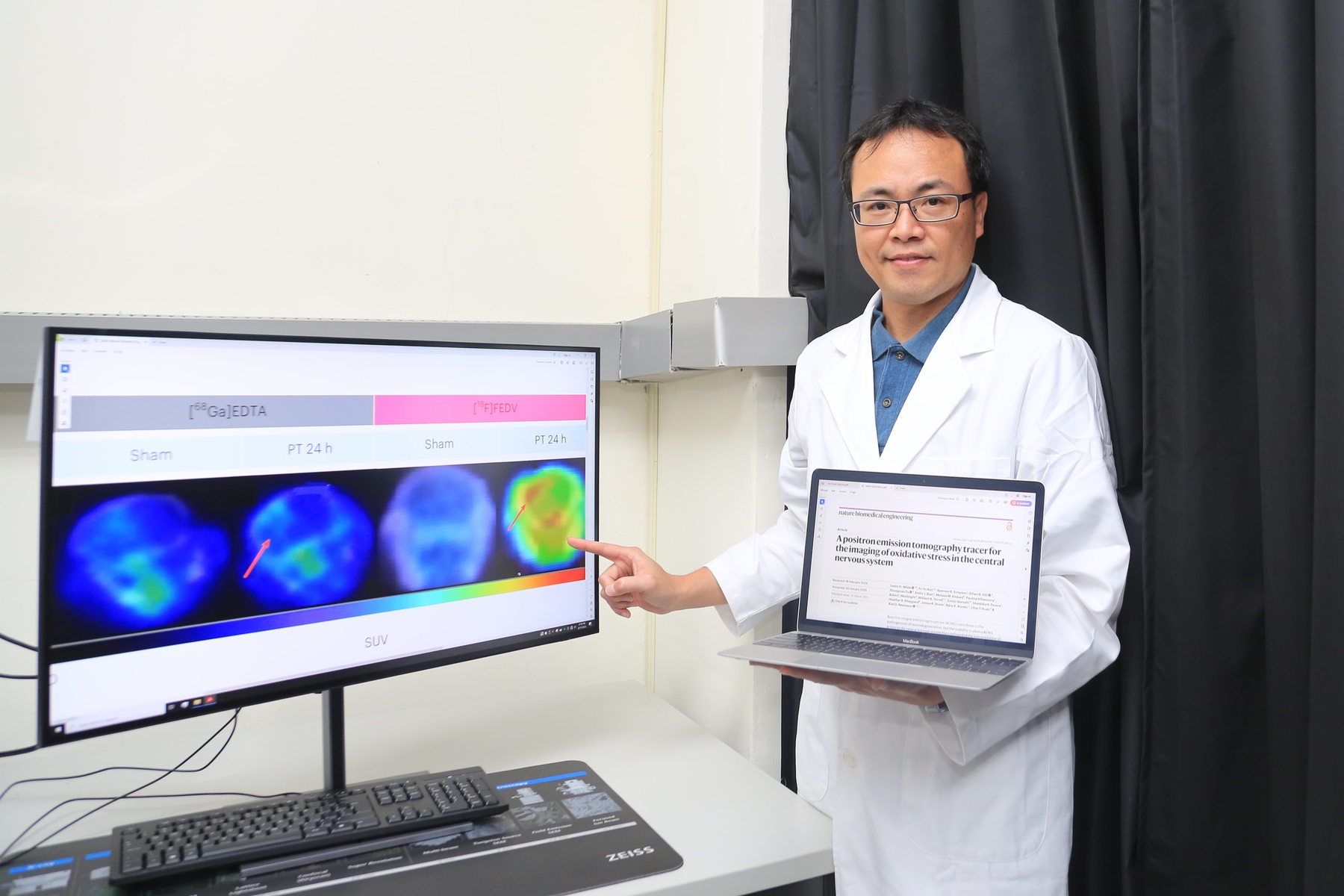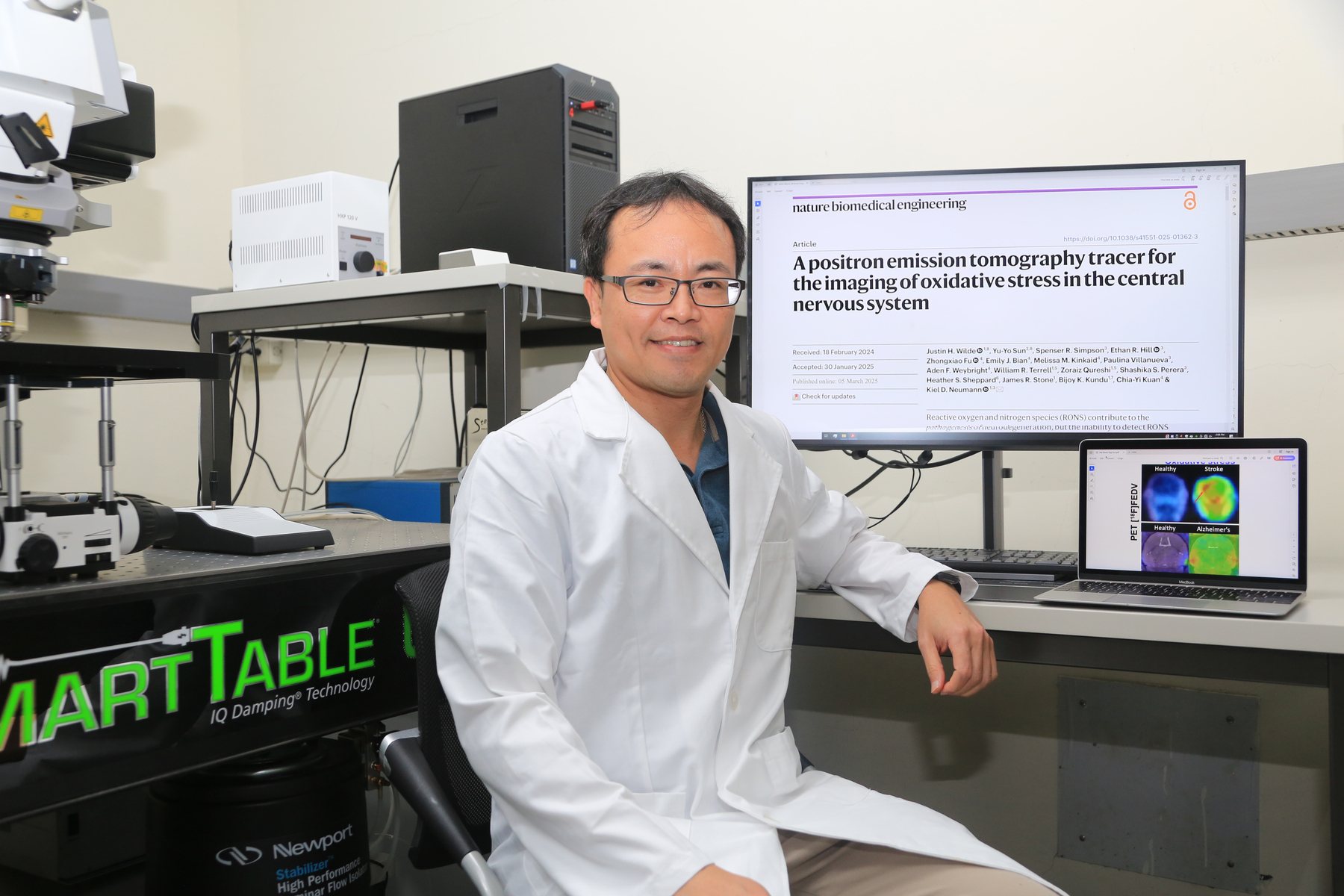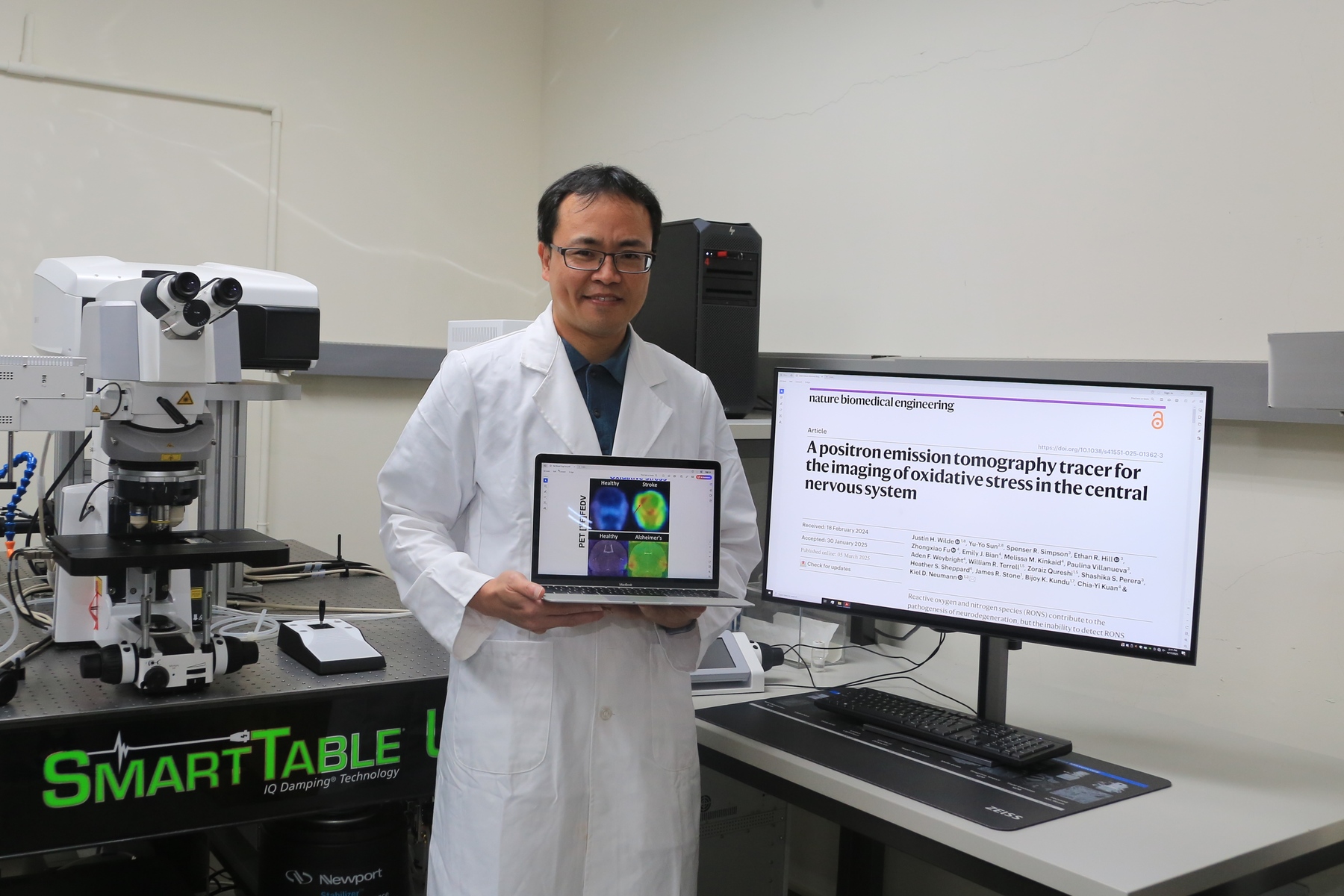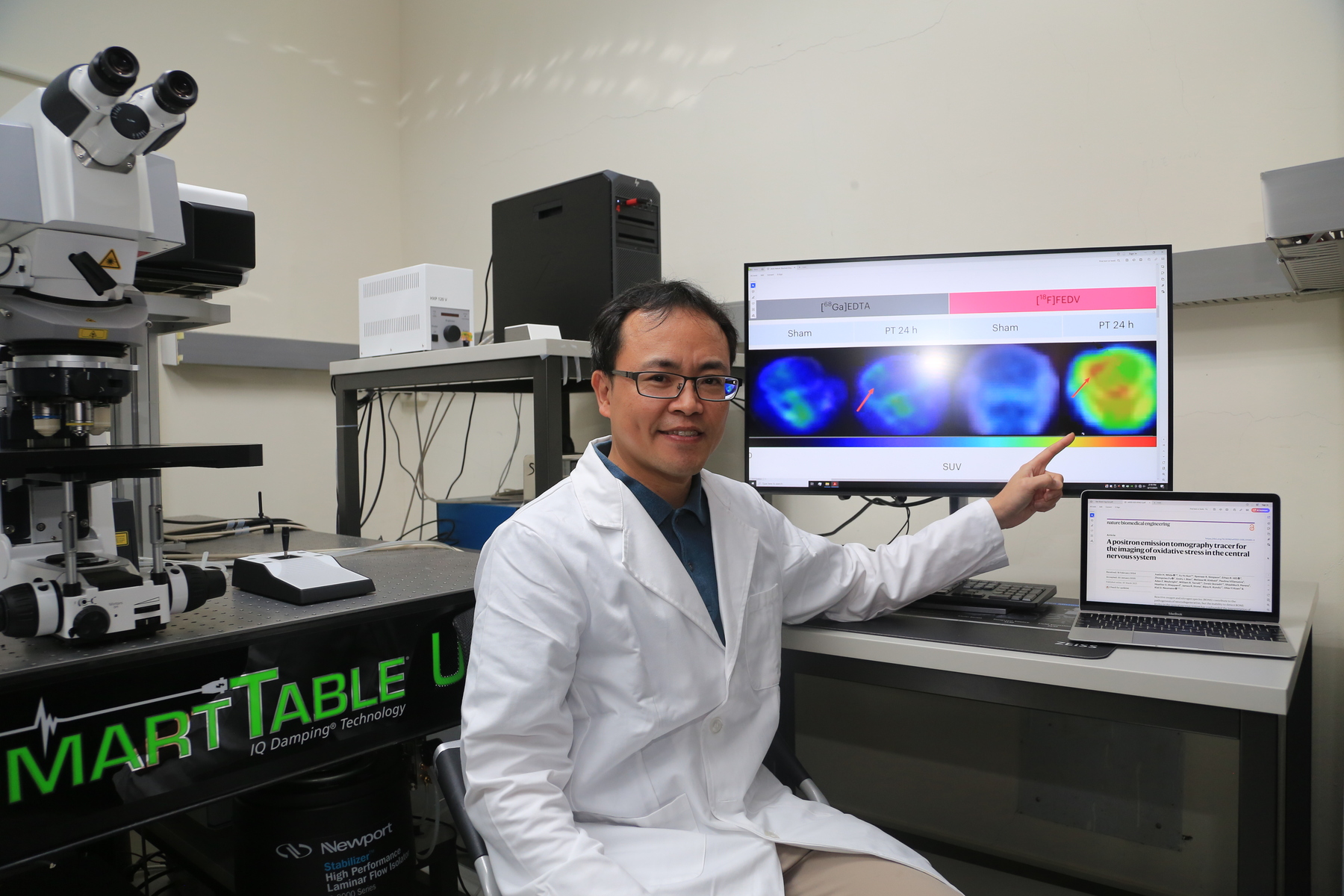World's first oxidative stress detection technology in the brain: NSYSU research offers hope in combating Alzheimer's disease





2025-04-28
Hope is on the horizon for slowing the progression of Alzheimer's disease, stroke, and ALS! Assistant Professor Yu-Yo Sun from the Institute of Biopharmaceutical Sciences at National Sun Yat-sen University (NSYSU), in collaboration with the University of Virginia and St. Jude Children's Research Hospital, transformed a drug originally developed for ALS treatment into a non-invasive detection imaging tool. This innovative technique was able to detect changes and distribution of oxidative stress in the brain, enabling early detection and intervention during the onset of strokes and neurodegenerative diseases, significantly increasing the chances of successful treatment. This groundbreaking, non-invasive technology was published in the prestigious journal Nature Biomedical Engineering.
Assistant Professor Sun states that stroke and neurodegenerative diseases such as Alzheimer's and amyotrophic lateral sclerosis (ALS, commonly referred to as Lou Gehrig's disease) are major global health challenges. Recent studies have identified "oxidative stress" as a critical pathological mechanism in the early stages of these diseases. However, research in this field remains largely at the animal testing stage, and there are currently no clinical imaging tools capable of directly visualizing oxidative stress in the brain, making early detection and treatment difficult.
To address this, Sun's research team conducted an international collaboration, leveraging the properties of the ALS medication "edaravone"—notably its long structural half-life, stability in the blood plasma, and ability to diffuse through the blood-brain barrier—to develop a novel positron emission tomography (PET) imaging probe. They named this new tracer [¹⁸F]fluoroedaravone (abbreviated as [¹⁸F]FEDV). This world-first oxidative stress imaging technology enabled real-time visualization of oxidative stress dynamics in the central nervous system (CNS), offering great value in clinical diagnosis, efficacy evaluation, and disease progression monitoring.
Sun pointed out that [¹⁸F]FEDV was one of the few imaging agents developed from an already approved clinical drug, making it highly safe. Its ability to cross the blood-brain barrier to reach the CNS allowed it to detect oxidative stress in brain cells, and it could be used with existing PET scan equipment in hospitals, demonstrating exceptional translational potential. Not only did it enable early-stage, visual diagnostics, but it also offered a "theranostic" (therapy + diagnostic) approach, which was used in low doses for diagnostics while retaining therapeutic effects at higher doses for treating oxidative stress. This study re-engineered an existing clinical drug for imaging applications and had already passed animal testing. Human clinical trials are planned, aiming to provide a new, non-invasive diagnostic approach for neurodegenerative diseases and stroke, pushing the boundaries of precision medicine and neuroimaging.
"[¹⁸F]FEDV leverages edaravone's ability to react with reactive oxygen and nitrogen species (RONS) and selectively bind to free radicals," Sun explains. "By radiolabeling the molecular structure, its interaction with oxidative stress can be visualized through PET scans." Once [¹⁸F]FEDV binds to reactive oxygen species, its structure and polarity change, causing it to remain within the cells, generating oxidative stress, creating distinct imaging contrast. This functions similarly to a contrast agent, offering high sensitivity and accuracy in detecting oxidative stress and also enabling the monitoring of treatment outcomes. The research team confirmed that this technique successfully detected early oxidative stress changes in mouse models of stroke and Alzheimer's disease, potentially halting disease progression at an early stage.
Nature Biomedical Engineering is one of the world's leading and most authoritative journals, with a 2023 Journal Impact Factor of 27.7. In the category of Biomedical Engineering, it ranks 1st among 123 journals based on both the Journal Impact Factor and the Journal Citation Indicator.
Journal link: https://www.nature.com/articles/s41551-025-01362-3
